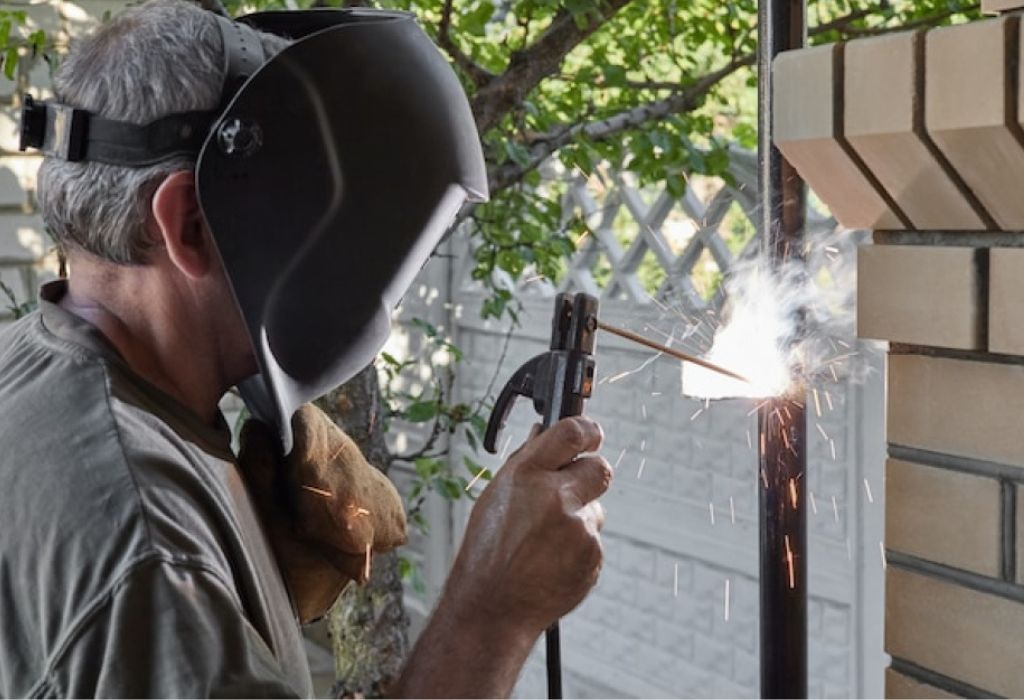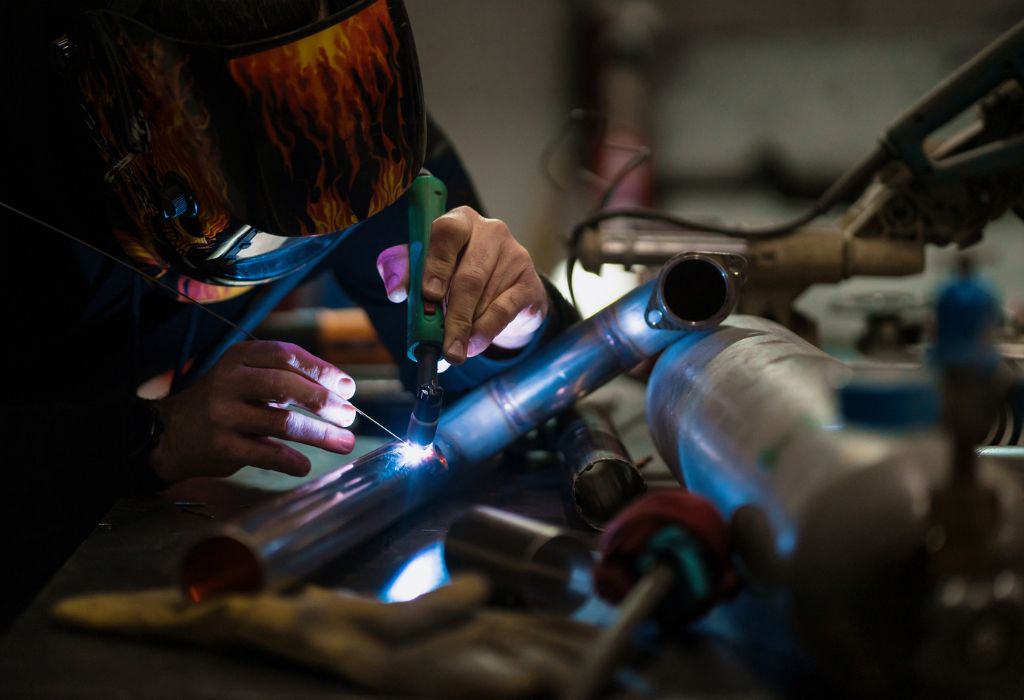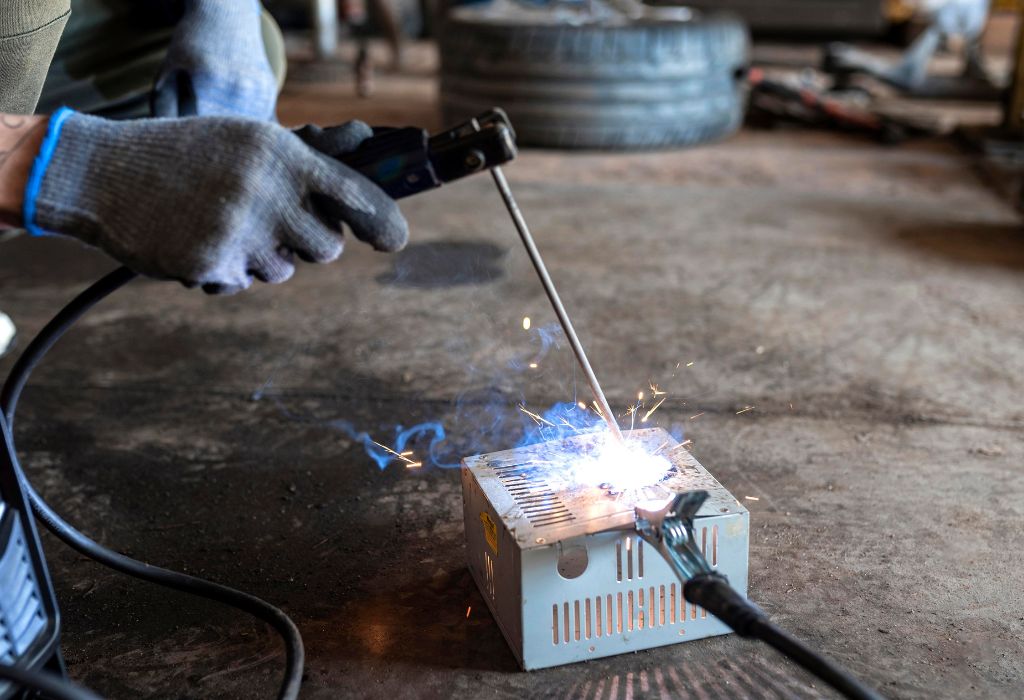A welder climbs onto a scaffold at dawn, facing a pipe fixed at a 45-degree angle. The joint cannot be rotated, and gravity makes molten metal flow unpredictably.
The test position is called 6G, and in the welding world, it represents one of the hardest challenges a craftsman can face.
Many welders can handle flat or vertical welds, but the 6G pipe test demands mastery of every position in a single joint. Flat, horizontal, vertical, and overhead techniques all come into play, pushing a welder’s control, endurance, and precision to the limit.
Employers view passing this test as proof of top-tier skill and reliability.
The American Welding Society notes that advanced positions like 6G are considered benchmarks for career advancement, and industries such as oil, gas, and power rely on welders who can perform in these demanding conditions [AWS].
According to the U.S. Bureau of Labor Statistics, over 42,000 welding jobs are projected to be added this decade, with certifications like 6G giving candidates a significant edge [BLS].
The 6G test involves welding a groove joint on a fixed pipe at a 45-degree incline. Because the pipe cannot be turned, welders must constantly adjust angles, torch control, and body position.
Success requires strong fundamentals, deep knowledge of welding procedures, and practice across multiple processes such as SMAW, GTAW, and GMAW.
This guide explains what a 6G welder is, how the certification works, the skills required, and why it is one of the most respected qualifications in the trade.
Quick Definition: What Is a 6G Welder?

A 6G welder is a professional who has passed the 6G pipe welding test, one of the most challenging certifications in the trade. This test requires welding a fixed pipe set at a 45-degree angle, where gravity and body positioning make control far more difficult than standard flat or vertical joints.
The “6” refers to the test position, while the “G” stands for groove weld. Because the pipe cannot be rotated, welders must demonstrate proficiency in all welding positions—flat, horizontal, vertical, and overhead—within a single joint.
This makes 6G welders highly valuable in industries such as oil and gas, shipbuilding, power generation, and structural fabrication. Passing this test signals that the welder can perform complex pipe welds in real-world, restricted environments.
What does “6G” mean exactly?
It means a groove weld on a fixed pipe positioned at a 45-degree incline.
Why is the 6G position so respected?
It combines flat, horizontal, vertical, and overhead welding in one test, proving versatility.
Is the 6G test only for one welding code?
No, both AWS and ASME Section IX use the 6G test for performance qualification.
Does passing 6G qualify a welder for other positions?
In many cases yes, as it is considered a near-universal qualification for pipe welding.
What is the difference between 6G and 6GR?
6GR adds a restriction plate or ring, making access tighter and simulating structural weld conditions.
6G vs Other Pipe Positions (1G, 2G, 5G, 6G/6GR)
Pipe welding tests are categorized by position, and 6G is the most difficult. Unlike 1G or 2G, which allow the welder to remain in one comfortable stance, 6G requires mastery of every angle.
5G pipe welding involves a horizontal axis, but the pipe remains fixed. 6G complicates this by tilting the pipe at 45°, forcing awkward transitions.
Is 6G harder than 5G?
Yes, because it combines uphill, downhill, and overhead movements in one weld.
Does 6G qualify more positions?
Often yes, depending on code, it can qualify welders for 1G, 2G, 5G, and sometimes plate positions.
When is 6GR required?
For structural welds where access is restricted by plates or rings.
Which position is easiest for beginners?
1G flat welds are the simplest and usually the first test for trainees.
Can a 6G welder perform 3G or 4G plate welds?
Yes, the skills usually transfer across multiple structural applications.
Codes and Standards: AWS vs ASME
The 6G test is recognized under multiple codes, but acceptance depends on the project. ASME Section IX governs welder qualification for piping, while AWS D1.1 is used for structural work.
Each code defines essential variables such as base metal group, filler type, diameter, and position. A passed 6G test may qualify multiple ranges depending on the standard.
Can an ASME 6G test be used on an AWS project?
Sometimes, but only if the engineer or owner accepts it in writing.
What does ASME Section IX focus on?
It qualifies welders for processes, materials, thicknesses, and positions.
Does AWS D1.1 use 6G?
Yes, but for structural applications, 6GR is more common.
Is there one universal cert?
No, each project follows its own governing code.
Who decides acceptance?
The project’s engineer or quality control inspector has final authority.
Inside the 6G Test: Coupon, Fit-Up, and Weld Sequence
A typical 6G test involves a 2–6 inch pipe, beveled at 37.5°, locked at a 45° incline. The welder must run root, fill, and cap passes according to the approved procedure.
Common methods include GTAW for root and SMAW for fill and cap, or all-SMAW with cellulose and low-hydrogen electrodes. Fit-up and root gap are critical, as poor alignment causes defects.
What is a root pass?
The first bead that penetrates and fuses the inside edges of the joint.
Why is fit-up so important?
Small gaps or misalignment can lead to lack of fusion or burn-through.
What electrodes are used?
6010 for root, 7018 for fill and cap are common choices.
Is GTAW better for the root?
Yes, it provides cleaner, more precise penetration, especially on thin-wall pipe.
Do test coupons vary?
Yes, diameter and thickness depend on the code and certifying body.
Inspection and Acceptance Testing

Once the weld is complete, inspectors check for defects. Visual inspection comes first, followed by destructive or non-destructive testing.
Common methods include bend tests, radiography, or ultrasonic testing. Any evidence of porosity, slag inclusions, or lack of fusion can cause failure.
What causes most failures?
Slag inclusions, lack of penetration, or poor tie-ins.
What is radiographic testing (RT)?
X-rays are used to detect internal weld flaws.
Is ultrasonic testing used?
Yes, sound waves identify defects without damaging the weld.
Are bend tests destructive?
Yes, coupons are bent to check ductility and fusion.
Can welders retest after failing?
Yes, usually after additional training and practice.
Skills Required to Pass 6G
Mastery of the 6G test demands more than technical ability. Welders need stamina, precision, and strong body control to maintain consistency at awkward angles.
Key skills include torch manipulation, puddle control, and smooth transitions from flat to overhead. Reading and following a Welding Procedure Specification (WPS) is mandatory.
Which process is best for learning roots?
GTAW is the most precise, while SMAW is common in field work.
Is uphill or downhill harder?
Both have challenges; uphill needs control of gravity, downhill requires speed and heat balance.
Why is body positioning important?
The 45° incline forces welders into uncomfortable stances that test endurance.
Do welders need math skills?
Yes, basic math helps in reading blueprints and planning joints.
How long does it take to master 6G?
Months or years of practice depending on training frequency.
Equipment and Consumables
A 6G welder must know how to select the right equipment. SMAW and GTAW machines are most common, with supporting tools like grinders, hi-lo gauges, and alignment clamps.
Electrodes and filler metals must match the WPS. Low-hydrogen rods are critical to prevent cracking.
Why use 7018 electrodes?
They provide strong, low-hydrogen welds for structural integrity.
What tungsten is used for GTAW?
ER70S filler with 2% thoriated or lanthanated tungsten is common.
Are purge systems needed?
For stainless steel or exotic alloys, yes.
Do gloves and PPE matter in testing?
Absolutely, safety compliance is checked during exams.
What about preheat?
Required for thicker or high-carbon steels to avoid cracking.
Training Path to 6G Certification
Welders typically begin with plate certifications before advancing to pipe. Training progresses from 1G to 2G, then 5G, and finally 6G.
Schools and unions offer structured programs, while many welders practice with mock coupons before attempting certification.
How long does training take?
Several months in school or years in apprenticeships.
Is 6GR needed after 6G?
Yes, for structural welds in bridges or offshore rigs.
Do employers pay for training?
Often yes, especially in union or industrial projects.
Can self-taught welders pass?
Possible, but structured training improves chances.
Do schools use real code tests?
Yes, many follow ASME or AWS standards.
Career Value of a 6G Welder

6G certification signals elite skill, making welders highly employable. Industries such as oil and gas, power generation, and shipbuilding actively recruit 6G welders.
Pay reflects the difficulty. Many 6G welders earn higher wages and overtime compared to general welders.
Is 6G a high-paying certification?
Yes, it often leads to six-figure salaries in specialized industries.
Which sectors hire 6G welders most?
Oil, gas, pipelines, power plants, and shipyards.
Does 6G help with international work?
Yes, many global contractors recognize it.
Is demand growing?
Yes, with thousands of new welding jobs projected each decade.
Does it guarantee a job?
Not by itself, but it greatly improves employability.
Common Mistakes in 6G Testing
Many welders fail due to poor preparation. Misaligned fit-up, incorrect heat input, or lack of cleaning between passes are common mistakes.
Strong focus on practice and discipline reduces the chance of failure.
What is the most common root defect?
Lack of penetration from improper keyhole technique.
Why do caps fail?
Excessive weaving or undercut at the top of the pipe.
Do time limits matter?
Yes, tests are often timed, adding pressure.
What if slag is trapped?
Proper cleaning between passes is mandatory.
Can rushing cause failure?
Yes, speed often sacrifices consistency.
Future of 6G Welding
Automation is advancing, but skilled 6G welders remain irreplaceable. Orbital welding is used in some industries, yet complex repairs and unique fit-ups still require manual expertise.
Digital inspection tools may support welders, but human skill continues to be essential.
Is automation replacing 6G welders?
Not fully; field conditions still demand manual work.
Should welders learn orbital welding?
Yes, it complements manual certification and raises employability.
Will VR training help?
Yes, simulators are increasingly used to prepare welders for exams.
Are digital inspections reliable?
Yes, but final acceptance is often done by certified inspectors.
Is 6G still worth learning?
Absolutely, it remains a gold standard in welding.
Conclusion
So, what is a 6G welder? A highly skilled professional certified to weld a fixed 45° pipe groove joint, proving mastery of all welding positions in one test.
This qualification opens doors in industries that demand precision, endurance, and adaptability. By training, practicing, and passing the 6G test, welders demonstrate elite ability and secure some of the most respected and highest-paying roles in the trade.

I’m Darrell Julian, the founder, lead writer, and hands-on welding enthusiast behind ArcWeldingPro.com. With more than 15 years of real-world welding experience, I created this platform to share what I’ve learned in the field, in the shop, and in the heat of the arc.


